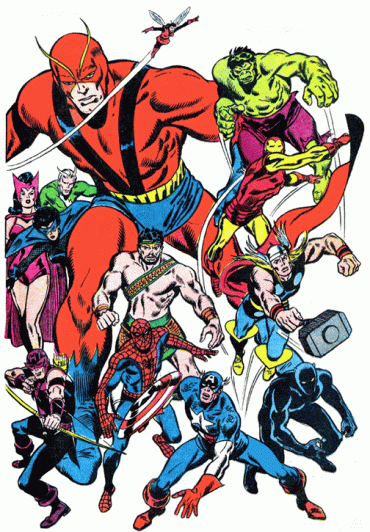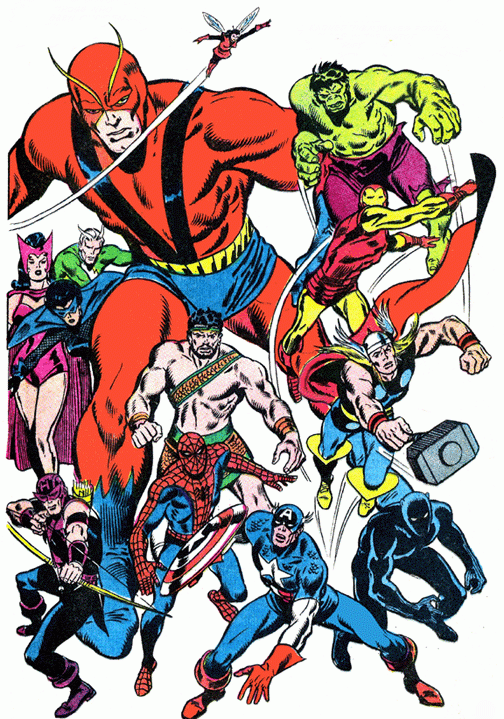
Welcome
Thanks for joining me!
This blog is about comic books. It’s also a memoir of my childhood and early college days. That period in my life was partially centered on the reading of comics published between 1968 and 1985. I hope to fill these meandering pages with happy memories, of friends, family, of frequent visits to rotating comic racks, of sojourns to the first specialty comic shops, and adventures at the early Comic Con. This blog will also present a collection of thoughts on how comic books, Marvel titles in particular, reflected the society in which I grew up.
Bronze Age comics were published during a period of enormous, often contentious, social change. The expansion of Marvel titles in 1968 coincided with the assassinations of Martin Luther King and Robert Kennedy, the height of the war in Vietnam, and the police riot at the Democratic convention in Chicago. It shared the era with protests on college campuses, unrest in America’s inner cities, the flourishing of the modern women’s movement, and other societal challenges, changes, shifts and swings too numerous to mention.
In future posts, I hope to take a look at specific characters and narrative arcs that either reflect these wider social themes, or simply interest me because they were, well, fun to read. I’ll tend to focus on a single character/narrative for multiple posts, and then move on. In the future, I might even do some comparisons between the original story lines that appeared between 1968 and 1980 and the films currently emanating from the Marvel Cinematic Universe.
Right off the bat, I want to apologize to any DC readers out there, because there won’t be much DC here. For better or worse, when I was a kid, I was a “Marvel Zombie.” I was dedicated to Marvel characters and titles, thought DC was a little backwards, and considered “Super Friends,” ABC’s rendition of the Justice League of America, the most horrible cartoon ever created. As an adult, I know now that DC had a lot to offer after 1970, but unfortunately, that realization is not reflected in my comic collection, which is going to be one of the main sources I’ll rely on when I write. Eventually, I might purchase and delve into some cool Denny O’Neil/Neal Adams’ Green Lantern-Green Arrow books, but that is way down the line.
So Marvel it is.
Now this is going to sound pseudo academic, but before I can begin a mental dump about everything I remember about the comics I grew up with, I have to describe what a Bronze Age comic is.

Bronze Age comics were produced between 1970 and 1985, largely by rival publishers Marvel and DC. Because they appeared during the tumultuous time described above, they had a different feel from their Golden and Silver Age predecessors. Golden Age comics, which appeared during the World War Two Era, witnessed the appearance of modern superheroes like Batman and Superman, as well as crime and horror stories. These latter themes eventually became the targets of social critics during the McCarthy Era, bringing the Golden Age to a rather inglorious end. The post-war Silver Age that followed saw the return of superheroes as primary subjects and the industry’s creation of the Comics Code Authority to police content.
Although Bronze Age comics retained the centrality of the superhero in their story lines, there were a few differences.
First, the magazines began to incorporate subject matter noted for their social relevance. The heroes increasingly dealt with issues like drug abuse, racial discord, generational conflict, and the war in Vietnam. The adoption of these topics were part of a general trend towards darker, more realistic story lines that often parted ways with established convention. The 1973 death of Gwen Stacy, Peter Parker’s longtime love interest, in Spider-Man #121, is just the most famous instance of the more realistic story lines that characterized the Bronze Age.
Bronze Age superheroes also became more reflective of the increasing diversity of American society. The Falcon, the first African American superhero, appeared in Captain America #117, and shared the magazine title with Cap by issue #134. The Black Panther, created as an occasional character by Stan Lee and Jack Kirby in 1966, became a Marvel Universe regular, joining the Avengers a few years later. A Native American character, Thunderbird, briefly joined the X-men in 1975, his early death remedied by periodic reappearances in the Modern Era.
A shift in the portrayal of gender roles was also a part of the Bronze Age embrace of realism. Publishers became more sensitive to their female readers, and narratives began to reflect the women’s movement of the time. Female characters were less the “damsel in distress” and more empowered actors, whether playing the role of supporting, non-superhero characters, or superheroes in their own right. During the Bronze Age, the male Captain Marvel was replaced by a female version, Spider-Woman came on the scene, and Daredevil lost his solo title to Daredevil and the Black Widow.
Finally, realism in art was the visual contribution of Bronze Age comics. The early style of Silver Age artists tended towards the surrealistic aspects of the strange environments–alien planets, alternate dimensions–and plot lines of their magazines. Towards the end of that era, artists began to develop what was, for their time, photo-realistic panels that reflected the more relevant subject matter that was dominating the industry.
The Bronze Age had other aspects: the rise of “sword and sorcery” titles, the retirement of Golden and Silver age artists, writers and editors and their replacement by a new generation of creators with very different ideas on what a comic book should be, the rise of comic book specialty stores and the fall of newsstand distribution, and others. We can talk about these factors later though.
So once again, welcome. I’ll eventually set up a comments section so everyone can chime in about their own experiences and thoughts. In the meantime, feel free to drop me a line.
Posted in: Blog
